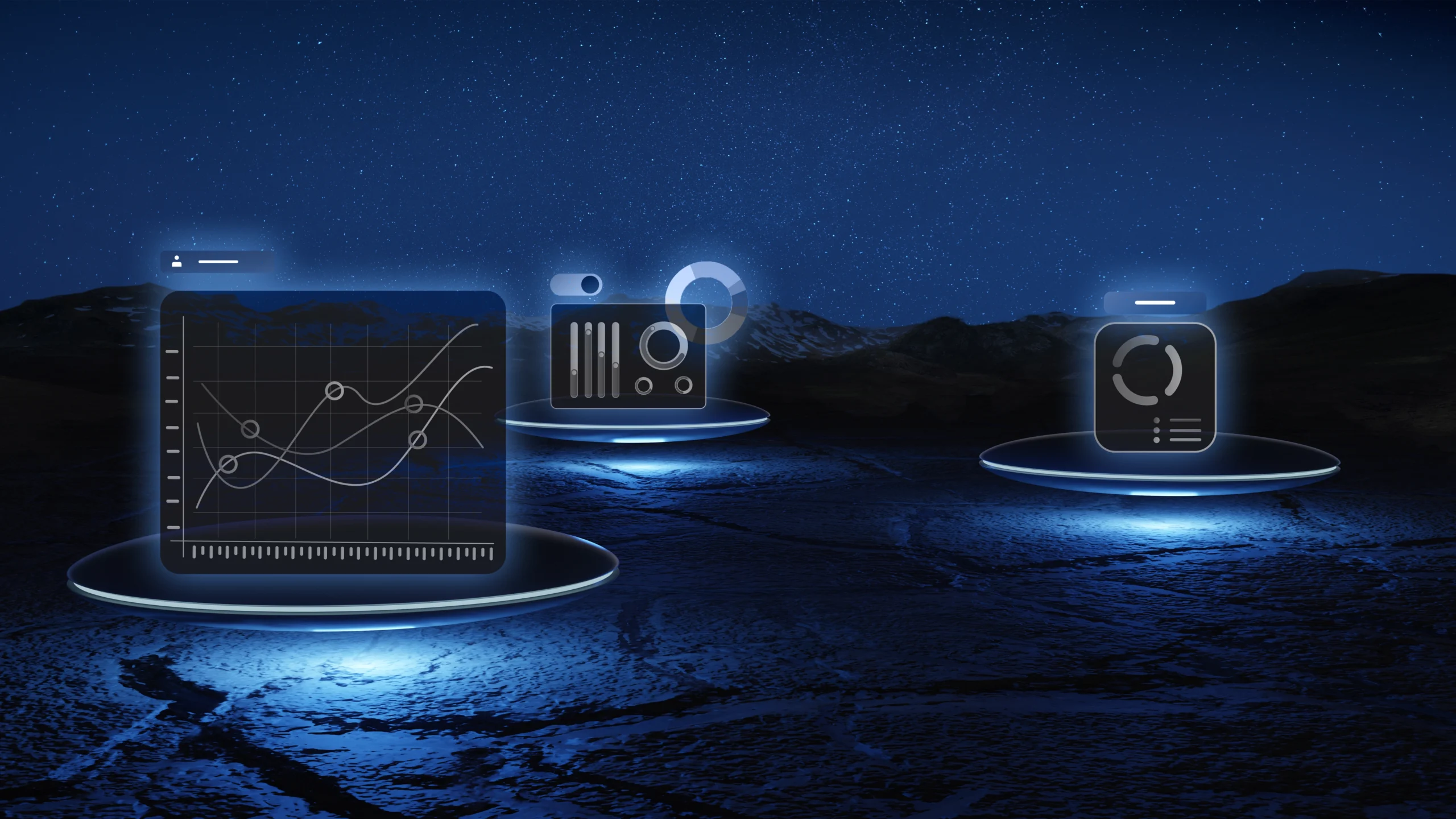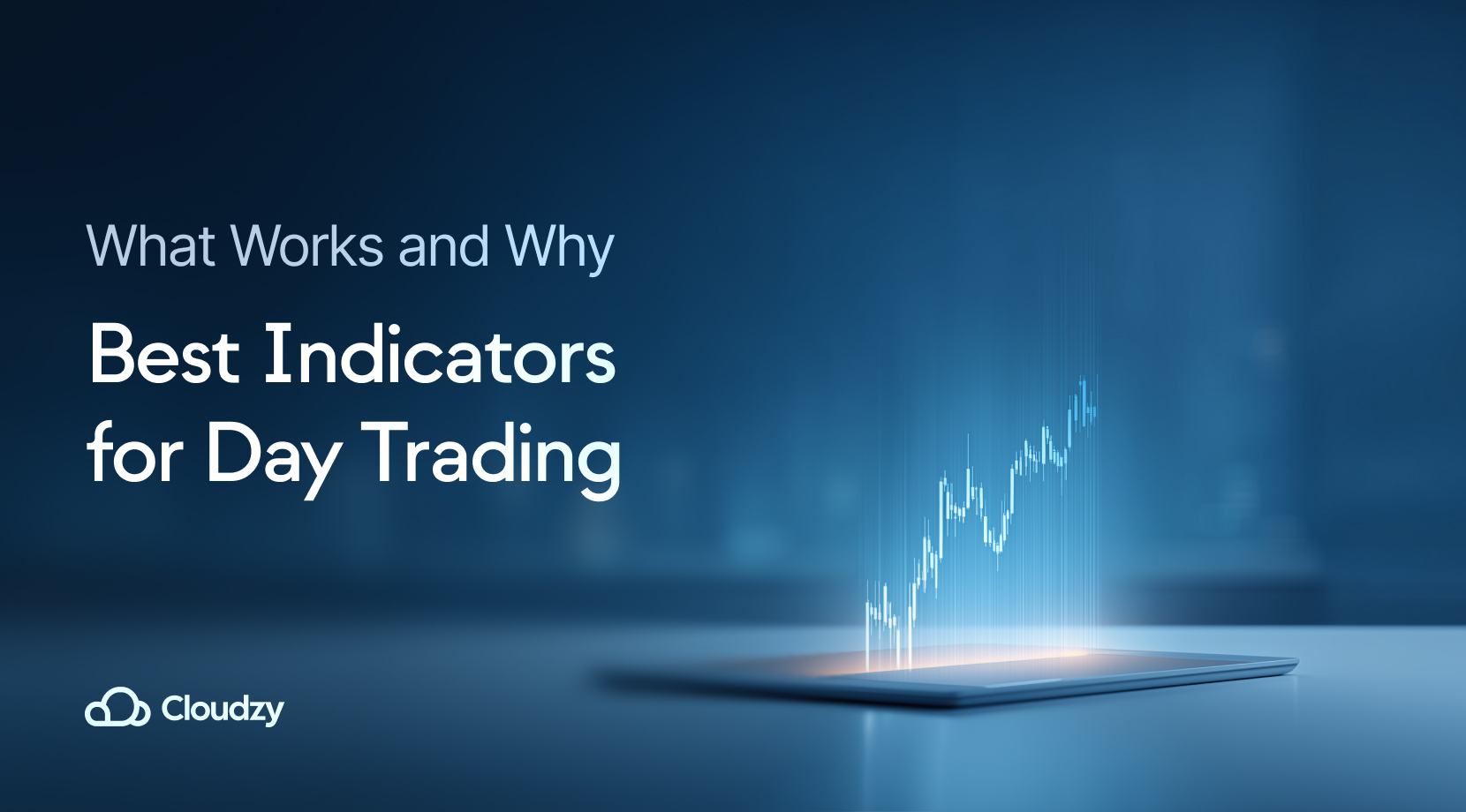VWAP, RSI (14-period), and 9/21 EMA are the best indicators for day trading because they cut through market noise fast enough to actually matter when prices are moving.
Here’s the thing about technical indicators for day trading—most of them were designed for longer timeframes and fail miserably when you’re trying to catch 5-minute moves. The ones that work filter signals within 1-2 candles instead of lagging behind like a broken GPS.
When best trading indicators stop working, it’s usually because traders pile on too many at once or completely ignore volume confirmation (classic rookie mistake).
TL;DR Summary
- VWAP, RSI, and EMA give you the fastest reliable signals without drowning in false breakouts
- Never use more than 3 indicators—your brain can’t process more anyway
- 5-minute charts hit the sweet spot between speed and accuracy
- VPS hosting cuts execution lag by 60-80% (this actually matters more than most think)
What Is Day Trading and Why Indicators Matter

Day trading is basically financial whiplash. You’re in and out of positions before the market closes, unlike swing traders who can afford to wait around for days or weeks. Speed beats accuracy every single time because you’re hunting short-term market moves that happen faster than you can blink.
The brutal truth? Only 3% of day traders stay profitable long-term. That’s not because the math is impossible. It’s because most people use the wrong tools for the job. A 50ms execution delay might sound tiny, but it’ll cost you real money when prices gap against your position.
This is where choosing the best indicators for day trading becomes make-or-break territory instead of just theoretical nonsense.
What Makes an Indicator Good for Day Trading?

The best technical indicators for day trading need three things that most indicators completely lack: lightning-fast updates, intelligent noise filtering, and volume awareness.
Fast updates mean getting signals within 1-2 candles, not waiting 20 periods like some ancient moving average that’s always late to the party. Smart noise filtering keeps you from chasing every tiny wiggle on 5-15 minute charts where the real action happens.
But here’s what separates amateurs from pros: volume integration. Price can lie, but volume tells the truth about whether institutional money is actually moving or if retail traders are just making noise.
| Fast Indicators | Slow Indicators |
| RSI (14-period) | RSI (21-period) |
| EMA (9/21) | SMA (50/200) |
| VWAP (intraday) | Moving Average Convergence |
| MACD (5,13,1) | MACD (12,26,9) |
Precision indicators for trading work because they sync with the technical charting tools that actually move markets, not the textbook theories that sound good but fail in practice. Understanding which best trading indicators professionals actually use separates winning strategies from academic nonsense.
Which Are the 5 Best Indicators for Day Trading?
These seven high-frequency indicators deliver the speed and precision needed when every second costs money. Each one serves a specific purpose: trend identification, momentum confirmation, or volume validation. The best indicator for intraday trading depends on your setup, but mixing 2-3 from this list creates setups that actually work when volatility hits.
Professional traders use these same tools because they respond before reversals happen, not after the move is already over.
VWAP (Volume Weighted Average Price)
VWAP shows where the smart money is actually trading by weighting price with real volume data. Stick to 5-minute and 15-minute charts for the clearest signals.
Real example: When a stock trades above VWAP at $50, target $52 but only if volume confirms with 2x normal activity. Below VWAP signals potential short opportunities, especially near resistance levels.
RSI (14-period, Short Setting)
Standard RSI uses 21 periods, but day traders need the 14-period version for faster momentum reads. When RSI drops from 70 to 30 within two hours, you’re seeing genuine oversold conditions worth trading.
The best indicator for intraday momentum becomes RSI when you need quick confirmation without waiting forever. Set it to 14-period on 5-minute charts—any faster creates too much noise, any slower misses the moves.
EMA (9/21 Crossover)
EMA crushes SMA for day trading because it weights recent prices heavier than ancient history. When 9 EMA crosses above 21 EMA, enter long positions but add 5 pips to account for fake-outs.
Multiple timeframe confirmation works like this: 15-minute chart shows overall trend direction, 5-minute chart shows your actual entry timing. Never fight the bigger timeframe trend.
MACD (Fast Settings: 5,13,1)
Forget the standard 12,26,9 MACD settings. Day trading indicators need the 5,13,1 configuration for faster response. When MACD histogram flips from negative to positive, it often predicts significant moves within the next 30 minutes.
Watch for divergence between price and MACD. When price makes new highs but MACD doesn’t follow, the rally is running out of steam.
Volume Oscillator, ATR, Stochastic
Volume Oscillator spots when current activity exceeds the 20-day average, confirming breakout legitimacy. ATR (Average True Range) helps set realistic stop-loss distances based on actual volatility instead of random numbers.
Stochastic works like RSI but more sensitive. It’s perfect for scalping setups under 15 minutes when you need immediate feedback.
How to Combine Indicators for Better Intraday Accuracy

Three indicators maximum. Anything more creates analysis paralysis and missed opportunities. The winning combination that actually works: VWAP + RSI + Volume for entry confirmation.
Go long when price holds above VWAP, RSI bounces from 30, and volume spikes to 2x average. This creates the best intraday strategy for consistent profits because each piece confirms the others instead of contradicting.
Understanding the best indicators for day trading means knowing how they work together rather than relying on single signals that fail when markets get choppy.
Example setups work when all three align: VWAP shows trend direction, RSI indicates momentum shift, volume confirms institutional participation.
Why Some Indicators Overlap with Swing Trading
Many indicators work across different timeframes, but day traders need faster settings to catch intraday moves. The same RSI that swing traders use with 21 periods becomes 14 periods for day trading speed.
The futures trading indicators translate well to day trading because both styles emphasize speed and leverage. The futures trading strategies share the same quick decision-making mindset that separates successful day traders from the crowd.
What Are the Most Common Day Trading Indicator Mistakes?
Mistake #1: Using too many indicators causes paralysis—stick to 2-3 maximum.
Mistake #2: Ignoring volume confirmation leads to false breakouts that cost money.
Mistake #3: Wrong timeframe settings like using 15-minute RSI on 1-minute charts creates noise.
Mistake #4: Not accounting for execution lag turns profitable signals into losses. A 200ms delay can flip a winning trade into losses on standard position sizes.
How a VPS Can Supercharge Your Day Trading Strategy

VPS hosting reduces latency from typical 150ms to 15ms, improving execution speed by over 90%. This speed improvement translates to 60-80% better fill prices during volatile periods when every millisecond determines profit or loss.
Think about it. Saving money on 100k EUR/USD trades monthly adds up fast when faster execution prevents slippage during news events.
Real-time trading tools become critical during daily forex market activity of $7.51 trillion, where fast execution strategies separate consistent winners from everyone else. Use Binance VPS for crypto day trading, Forex VPS for currency markets, or MetaTrader 5 VPS for advanced platforms.
VPS for low-latency execution becomes essential when running automated futures trading strategies that need consistent millisecond-level response times without human delays.
Final Thoughts: Pick Indicators That Fit Your Style and Market
VWAP, RSI, and EMA work because they balance speed with accuracy for most day trading scenarios without overwhelming you with information. The best indicators for day trading aren’t the most complex. They’re the ones that give clear, fast signals when markets move quickly and money is on the line.
Choose based on your actual timeframe: 5-minute charts for balanced trades, 1-minute for scalping, 15-minute for slightly longer holds. Don’t try to force one approach on every market condition.




